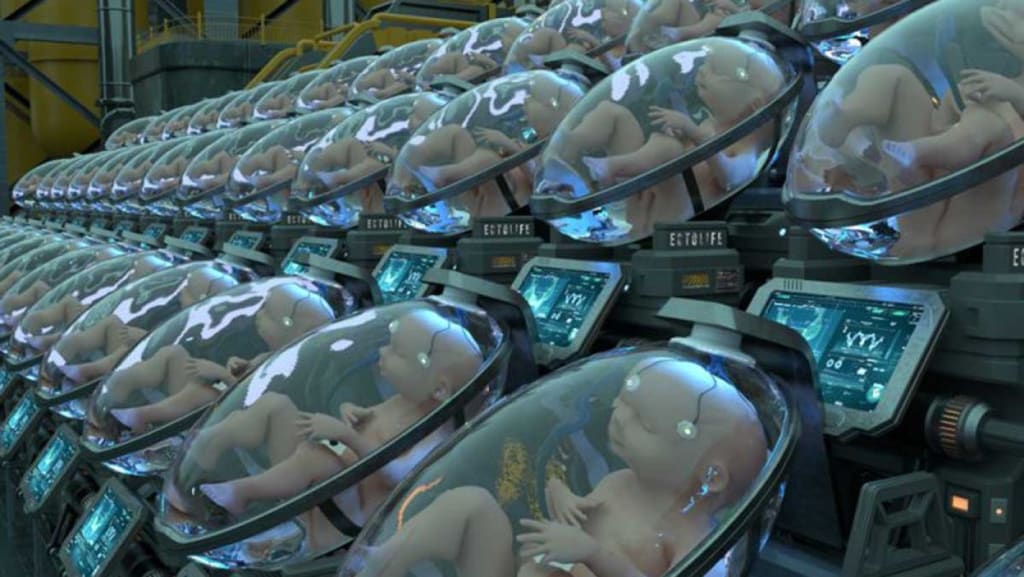The Future of Reproductive Science
Scientist Predict Lab-Grown Babies by 2028

In a groundbreaking development, Japanese scientists are predicting that the concept of lab-grown babies, once confined to the realms of science fiction, could become a reality as soon as 2028 by incubating eggs and sperms in an artificial womb, potentially offering a solution for those struggling with infertility. The researchers successfully used this method to create baby mice from two male rodents, demonstrating that their technology could work on humans. Advancements in reproductive biology, stem cell research, and assisted reproductive technologies have paved the way for the possibility of creating and nurturing embryos outside the human body. This remarkable progress opens up new horizons for the future of reproduction and raises profound ethical and societal considerations.
The Potential of Artificial Gestation:
Artificial gestation, the process of nurturing embryos to full-term development outside the human body, has long captured the imaginations of scientists and futurists. By creating an artificial womb-like environment, researchers aim to replicate the conditions necessary for embryonic growth and development, providing a revolutionary alternative to traditional pregnancy.
Advancements in Reproductive Technologies:
The advent of in vitro fertilization (IVF) marked a turning point in reproductive science, enabling conception to occur outside the body. Building upon this foundation, researchers have made significant strides in understanding embryonic development and the intricate processes involved. Moreover, breakthroughs in genetic editing and tissue engineering have further enhanced the potential for creating and manipulating embryos in controlled laboratory settings.
From Genetic Editing to Tissue Engineering: The Tools of Transformation
The power of genetic editing technologies, such as CRISPR-Cas9, has given scientists unprecedented control over the genetic makeup of embryos. This breakthrough capability opens the door to potentially correcting genetic defects or even enhancing desirable traits in future generations. Moreover, advances in tissue engineering have enabled the creation of synthetic environments that mimic the conditions of the human womb, providing a nurturing space for embryonic growth and development.
Challenges and Ethical Considerations:
While the possibility of lab-grown babies elicits excitement and awe, it also presents numerous challenges. Creating an environment that accurately replicates the complex ecosystem of the human womb is a formidable task. Scientists must overcome hurdles such as mimicking hormonal signaling, nutrient delivery, and maintaining the delicate balance required for proper embryonic development. Additionally, ethical considerations surrounding the status of embryos, consent, and the long-term effects on society need to be carefully addressed.
Implications for Reproductive Medicine:
The ability to cultivate embryos outside the human body has far-reaching implications for reproductive medicine. It offers hope to individuals and couples struggling with infertility, providing alternative pathways to parenthood. Moreover, lab-grown babies could potentially minimize the risks and complications associated with traditional pregnancies, offering a safer and more controlled environment for fetal development.
Implications for Reproductive Medicine: Transforming Lives
The advent of lab-grown babies has far-reaching implications for reproductive medicine. Individuals and couples struggling with infertility may find new hope through assisted reproductive technologies, providing alternative pathways to parenthood. The ability to cultivate embryos outside the human body also holds the potential to minimize the risks and complications associated with traditional pregnancies, fostering safer and more controlled environments for fetal development.
Conclusion:
The prospect of lab-grown babies becoming a reality by 2028 is a testament to the remarkable progress achieved in reproductive science. As scientists around the world push the boundaries of what is scientifically possible, the ethical and societal implications must be carefully examined and debated. While uncertainties and challenges remain, the potential benefits of artificial gestation cannot be overlooked. The coming years promise to be an exciting and transformative era for reproductive medicine, opening up unprecedented possibilities for the future of human reproduction.
About the Creator
Immanuella Baajike
Exploring life's wonders one story at a time. Join me on a journey of discovery and inspiration.






Comments
There are no comments for this story
Be the first to respond and start the conversation.